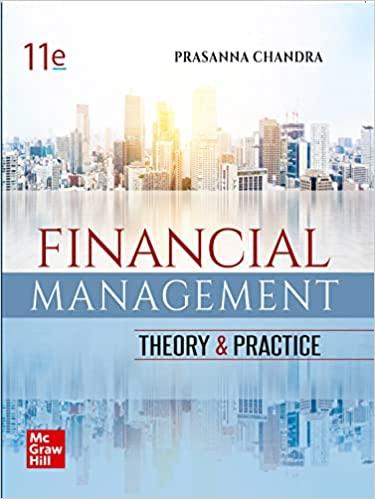Question
You are a Financial Manager at EMC company, which is considering expanding its operations in synthetic fibre manufacturing. Alex, CFO, comes into your office, drops
You are a Financial Manager at EMC company, which is considering expanding its operations in synthetic fibre manufacturing. Alex, CFO, comes into your office, drops a consultant's feasibility study report on your desk, and complains, 'We owe these consultants $1 million for this report, and I am not sure their analysis makes sense. Before we spend the $25 million on new equipment needed for this project, look it over and give me your opinion. 'You open the report and find the following estimates (in thousands of dollars): All of the estimates in the report seem correct. You note that the consultants used straight-line depreciation for the new equipment that will be purchased today (year 0), which is what the accounting department recommended. The report concludes that because the project will increase earnings by $4.875 million per year for ten years, the project is worth $48.75 million. You think back to your halcyon days in a finance class and realize there is more work to be done! You know that accounting earnings are not the right thing to focus on! First, you note that the consultants have not factored in the fact that the project will require working capital upfront (year 0), which will be fully recovered in year 10. Analysis of historical levels of working capital within EMC company indicates that at the start of each year, investment in working capital will need to be 8% of sales revenue for that year. Secondly, you see they have attributed $2 million of selling, general and administrative expenses to the project, but you know that $1 million of this amount is overhead that will be incurred even if the project is not accepted. Thirdly, both sales revenue and cost of goods sold are estimated in current price terms. The sales revenue is expected to be 4% per year and variable cost inflation is expected to be 5% per year. No increase in selling, general and administrative expenses is expected. Finally, EMC company uses a nominal (money terms) after-tax cost of capital of 10% for investment appraisal purposes. The company pays a tax of 20% per year in the year in which the taxable profit occurs.
1.Calculate the free cash flows and determine the NPV of this project. Comment on its financial acceptability. 2.Compute the IRR for EMC company and comment on its financial acceptability.
Project Year \begin{tabular}{cccccc} \cline { 2 - 6 } & 1 & 2 & & 9 & 10 \\ \hline Sales revenue & 30,000 & 30,000 & & 30,000 & 30,000 \\ - Cost of good sold & 18,000 & 18,000 & & 18,000 & 18,000 \\ \hline = Gross profit & 12,000 & 12,000 & & 12,000 & 12,000 \\ - General, sales, and & 2,000 & 2,000 & & 2,000 & 2,000 \\ administrative expenses & & & & 2,500 & 2,500 \\ \hline - Depreciation & 2,500 & 2,500 & & 7,500 & 7,500 \\ = Net operating income & 7,500 & 7,500 & & 2,625 & 2,625 \\ \hline - Income tax & 2,625 & 2,625 & & 4,875 & 4,875 \end{tabular} Project Year \begin{tabular}{cccccc} \cline { 2 - 6 } & 1 & 2 & & 9 & 10 \\ \hline Sales revenue & 30,000 & 30,000 & & 30,000 & 30,000 \\ - Cost of good sold & 18,000 & 18,000 & & 18,000 & 18,000 \\ \hline = Gross profit & 12,000 & 12,000 & & 12,000 & 12,000 \\ - General, sales, and & 2,000 & 2,000 & & 2,000 & 2,000 \\ administrative expenses & & & & 2,500 & 2,500 \\ \hline - Depreciation & 2,500 & 2,500 & & 7,500 & 7,500 \\ = Net operating income & 7,500 & 7,500 & & 2,625 & 2,625 \\ \hline - Income tax & 2,625 & 2,625 & & 4,875 & 4,875 \end{tabular}Step by Step Solution
There are 3 Steps involved in it
Step: 1

Get Instant Access to Expert-Tailored Solutions
See step-by-step solutions with expert insights and AI powered tools for academic success
Step: 2

Step: 3

Ace Your Homework with AI
Get the answers you need in no time with our AI-driven, step-by-step assistance
Get Started


